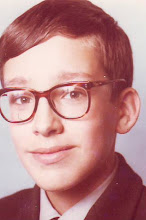I always find it difficult to talk about technical things without talking technical, but here goes:
You may have noticed that my blog URL includes my Amateur Radio
callsign, G8
FYK, so I just had to get something posted sooner rather than later on this technical hobby which I have indulged myself into on and off since I was in my mid teens.
The first thing to note is that this hobby has little, no I would say nothing whatsoever, to do with that other thing called CB Radio. First of all we cannot make up our own radio
callsigns, they are allocated to us by the Radio Licensing Authority in a strict
internationally recognised format. I obtained mine in 1972 after sitting a tough City and Guilds exam (now
NVQ Level 2 equiv., so I understand) which included the theory of radio transmission and reception, and the transmitting licence regulations and how the owner of a transmitter would be able to demonstrate
compliance. Sounds tough, but the fact is that so many people are so fascinated by this technical hobby that they find the basics get easier over the years as the thirst for technical radio knowledge increases. (See also my link to the 'Radio Society of Great Britain',
affectionately known as 'The
RSGB').
The hobby of Amateur Radio is now so diverse and encompasses all forms of communication via radio signals, so much so that the
morse code is now considered
irrelevant in this modern digital age. I myself was experimenting with the digital modes twenty years ago with AX25 'Packet Radio' (so very similar to the Internet instant messaging and bulletin boards of today),
RTTY (radio teletype, the digital version of the old teleprinters), and
SSTV (slow scan television, which is probably best known for obtaining weather pictures from orbiting
satellites), and all this via a Sinclair Spectrum Plus Two home computer connected to dedicated Amateur Radio transmitters and receivers.
So that this post doesn't get too long I will end this (Part. 1) with a couple of photo's of my Amateur Radio setup from the early/mid 1990's.
Please feel free to comment on the the equipment in there, especially if you recognise any make / models or have any questions. The details of the antenna system will be included in a future post. Personally, I think this looks like a reasonably smart and neat setup, but look what happens when we move the camera back a bit:

Now that's a bit more like a traditional 'Radio Shack'! Even though you still can't see the workbench on the left hand side, with the maxi and mini vices, 'multiple hands', vertical drill stand, soldering 'station', abandoned Verostrip projects, total mess including buried telephone, left over bits from the disco days stored underneath, etc., all of which I must have been ashamed of to include when I took this photo!
Notice also the then newly acquired second hand ICL DRS and DEC VaxMate computers on the right hand side, not clear but hopefully may be recognisable to anyone who knows them.

















